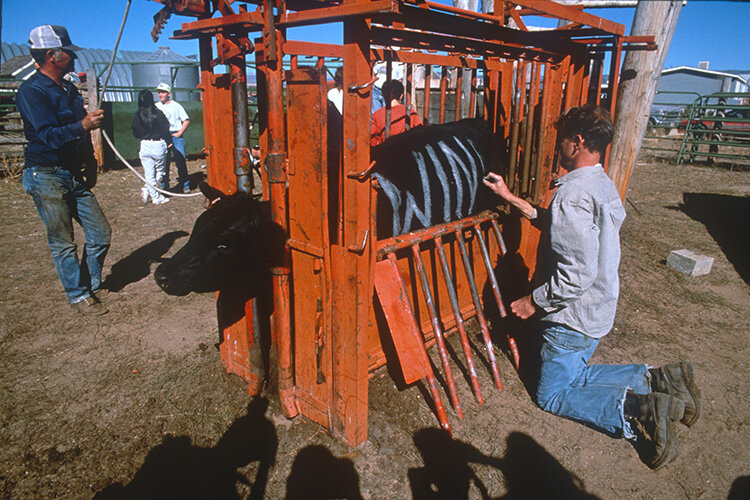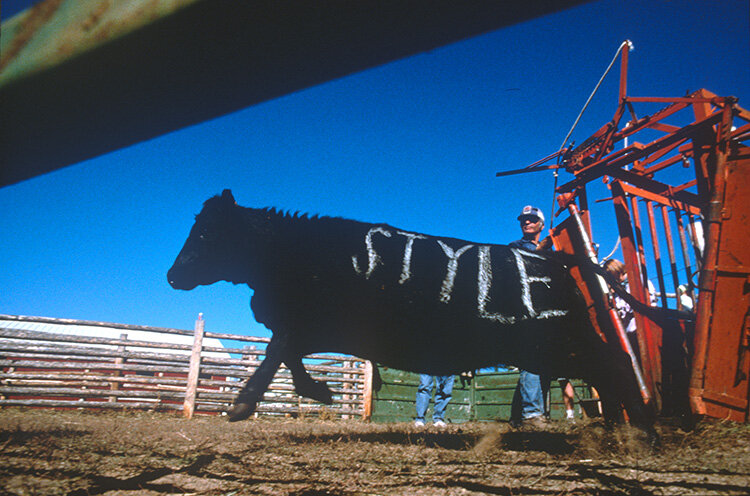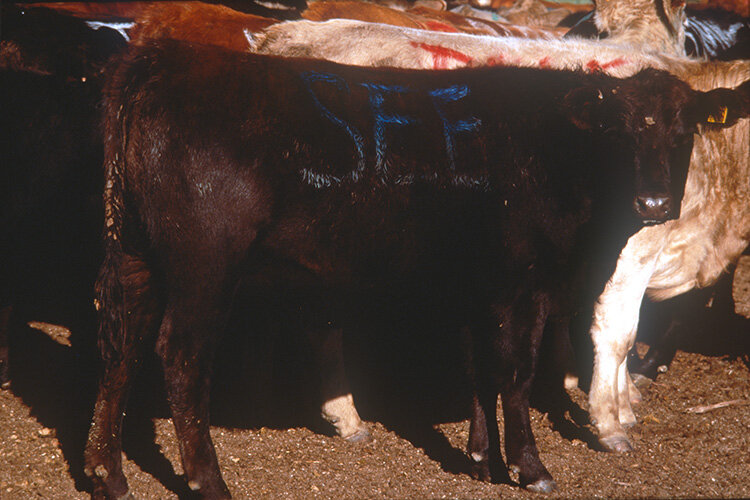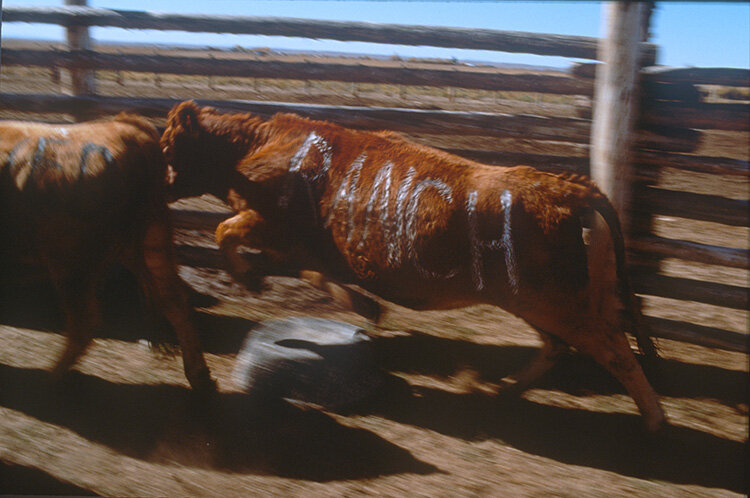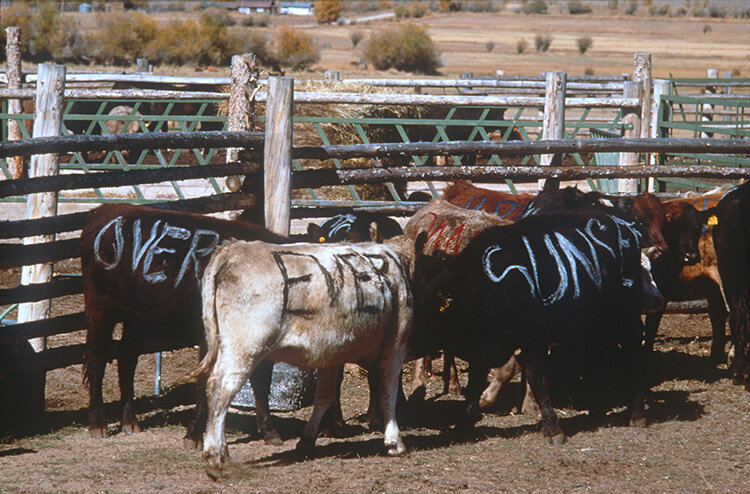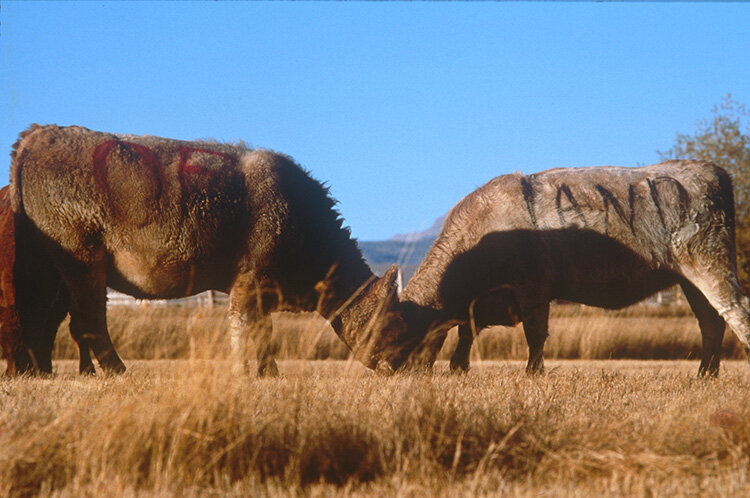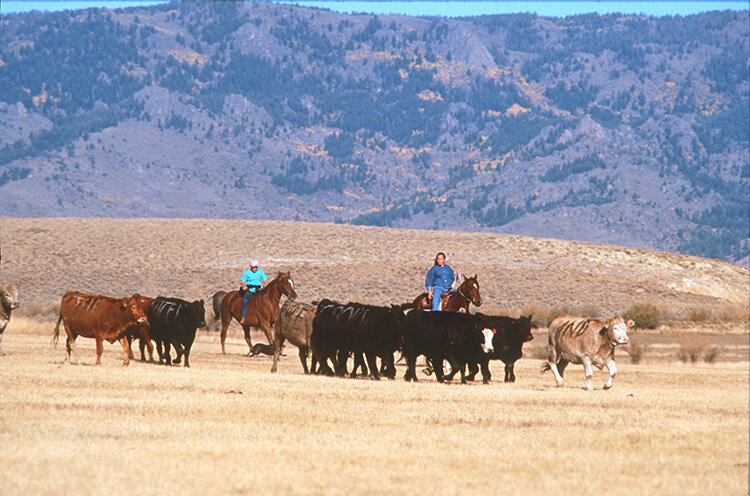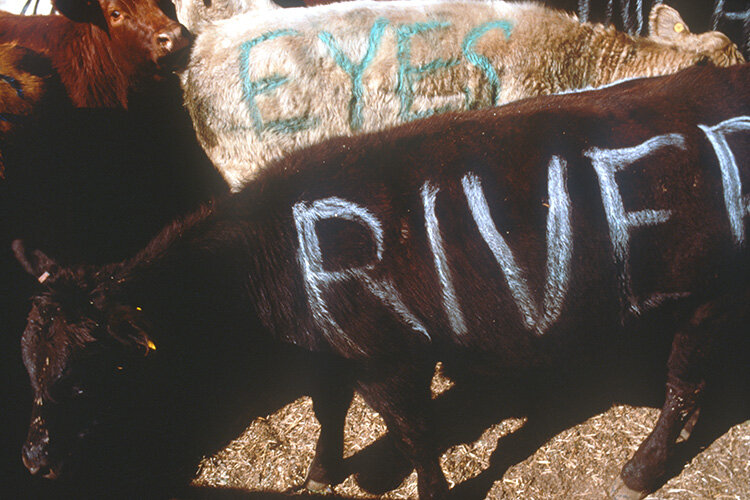Public & Group Projects
Through individual works and innovative collaborations, I share my studio practice with my community.
Heat Shock Protein (2022), inkjet printed folio, 11 x 30 in. open, centerfold image. Text by Matt Daly, image and layout by Sue Sommers.
Letters of the four DNA nucleotides and word pairings: Adenine/this; Cytosine/love; Guanine/made; Thymine/world. Color symbolism: blue, red, yellow and black for the four process colors (CMYK) and the four humors (phlegm/water, blood/air, yellow bile/fire, and black bile/earth).
Included in "Habitat: Artists’ Books," an exhibition and portfolio of prints by collaborating artists and writers. Laramie County Library, Cheyenne, WY; University of Wyoming Art Dept. Gallery; and University of Wyoming Coe Library, Laramie, WY.
Heat Shock Protein (2022), text by Matt Daly, page design by Sue Sommers
Willow/Hesston (2018), intaglio/collagraph edition, part of the Mid America Print Council's portfolio project for its "Go West: The Collaborative Turn" conference, held in Laramie, Wyoming.
Power Switch (2015), a collaboration by Pipeline Art Project. Group members JB Bond, David K. Klaren, and Sue Sommers inscribed a 100-ft.-wide power button symbol on a private pasture near the Anticline Natural Gas Field in Sublette County, Wyoming. Orange biennial flowers were planted to suggest the "off" setting, and purple perennials were planted to suggest "on."
Spin Twirl Loop Hang (2018), suspended in the Laramie County Library atrium, Cheyenne, Wyoming. This was a collaborative installation with Holland Dutton of Cora, Wyoming. We deployed long spools of player piano music and cassette tape.
Spin Twirl Loop Hang (2018). When a patron would enter the sliding doors at either end of the atrium, incoming air would gently rustle the paper and cassette tape, adding an audio element.
Reciprocity Clock (2017) A two-person spoon marks every hour as the time for reciprocity. Contribution to the Unstitched States online project.
Our Glittering World (2012-2014). A temporary public mural on the main street of Pinedale, Wyoming. Acrylic on plywood. Commissioned by ExSite: Incubate 2D, a program administered by the Pinedale Fine Arts Council's Public Art Program
Cattle Text Interaction (1993), a project by Kunstwaffen Art Group (Pip Brant, Duane Brant, and Sue Sommers). Text from a memoir written by a local ranchwoman was inscribed on 50+ pregnant heifers at a Boulder, Wyoming ranch. The livestock was then released into a pasture to deconstruct the text, creating new poetry and replicating the disruptions of meaning, context, and purpose for rural society in late 20th century America.
Cattle Text Interaction (1993). The national press used this project as fodder for the Culture Wars of the 1990s, misrepresenting it as a "waste of taxpayer dollars."
Cattle Text Interaction (1993). Funding was provided by the artists, and through a grant from New Forms/Regional Initiative, with funding from the Andy Warhol Foundation, the Rockefeller Foundation, and the National Endowment for the Arts.
Cattle Text Interaction (1993). A Denver television news station aired an accurate newscast about the project at 6 pm, but by 10 pm had edited the audio to make it sound like a "student project" that participants thought was a "foolish" use of "tax dollars."
Cattle Text Interaction (1993). The project was excoriated repeatedly by talk radio personality Rush Limbaugh and lampooned by humorist Dave Barry.
Cattle Text Interaction (1993). The photographs and a subsequent video were displayed at the Western Wyoming Community College Art Gallery in Rock Springs, Wyoming, and at the Sublette County Library in Pinedale, Wyoming.
Cattle Text Interaction (1993). The artists hosted an open house in the Sublette County Library so that locals - most of whom had missed the fact-based article in the local newspaper, but saw the negative Denver newscast - could meet the artists and ask questions.
Cattle Text Interaction (1993). At the public forum in Pinedale, the artists (who all lived and held jobs in the area) explained how the project was informed by research into local history, and enabled through relationships with local people. It was intended as a love letter to the ranching community and its history.








